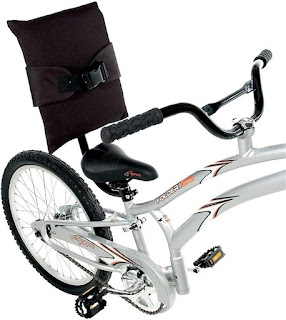How to Modify Your Bike for Senior Cycling
How to modify your bike for senior cycling
Cycling is a great way to stay active and healthy, regardless of your age. However, as we get older, our bodies change and we may need to make some modifications to our bikes to make them easier and safer to ride.
Here are a few tips on how to modify your bike for senior cycling:
- Get a wider saddle. A wider saddle will distribute your weight more evenly and reduce pressure on your perineum. This is especially important if you are riding for longer periods of time.
- Add a backrest. A backrest can provide support for your back and help you to maintain a more upright riding position. This can be helpful if you have any back problems.
- Install a step-through frame. A step-through frame makes it easier to get on and off your bike. This is especially important if you have any mobility issues.
- Add a basket or panniers. Baskets and panniers can be used to carry groceries, other belongings, and even your pet. This can be helpful if you are using your bike for everyday errands.
- Get a lower gear ratio. A lower gear ratio will make it easier to pedal, especially up hills. This is especially helpful if you are not as strong as you used to be.
- Install wider tires. Wider tires will provide more stability and traction, especially on rough surfaces. This can be helpful if you are riding on trails or in areas with poor road conditions.
In addition to modifying your bike, there are a few other things you can do to make cycling safer and more enjoyable as you get older:
- Wear a helmet. A helmet is essential for all cyclists, but it is especially important for seniors.
- Dress in layers. This will allow you to adjust your clothing as needed to stay comfortable in different weather conditions.
- Be aware of your surroundings. Be on the lookout for traffic, pedestrians, and other hazards.
- Take breaks. Don't push yourself too hard. Take breaks when you need them.
If you have any concerns about your health or fitness, please talk to your doctor before starting any new exercise program, including cycling.
Here are some additional tips for senior cyclists:
- Start slowly and gradually increase your distance and speed.
- Listen to your body and take breaks when you need them.
- Avoid riding in extreme heat or cold.
- Stay hydrated by drinking plenty of fluids before, during, and after your ride.
- Be aware of your surroundings and be predictable to other road users.
Cycling is a great way to stay active and healthy as you age. By making some modifications to your bike and following these tips, you can enjoy cycling safely and comfortably for many years to come.
Here is my next post: Cycling and its Effect on Producing Semen



Comments
Post a Comment